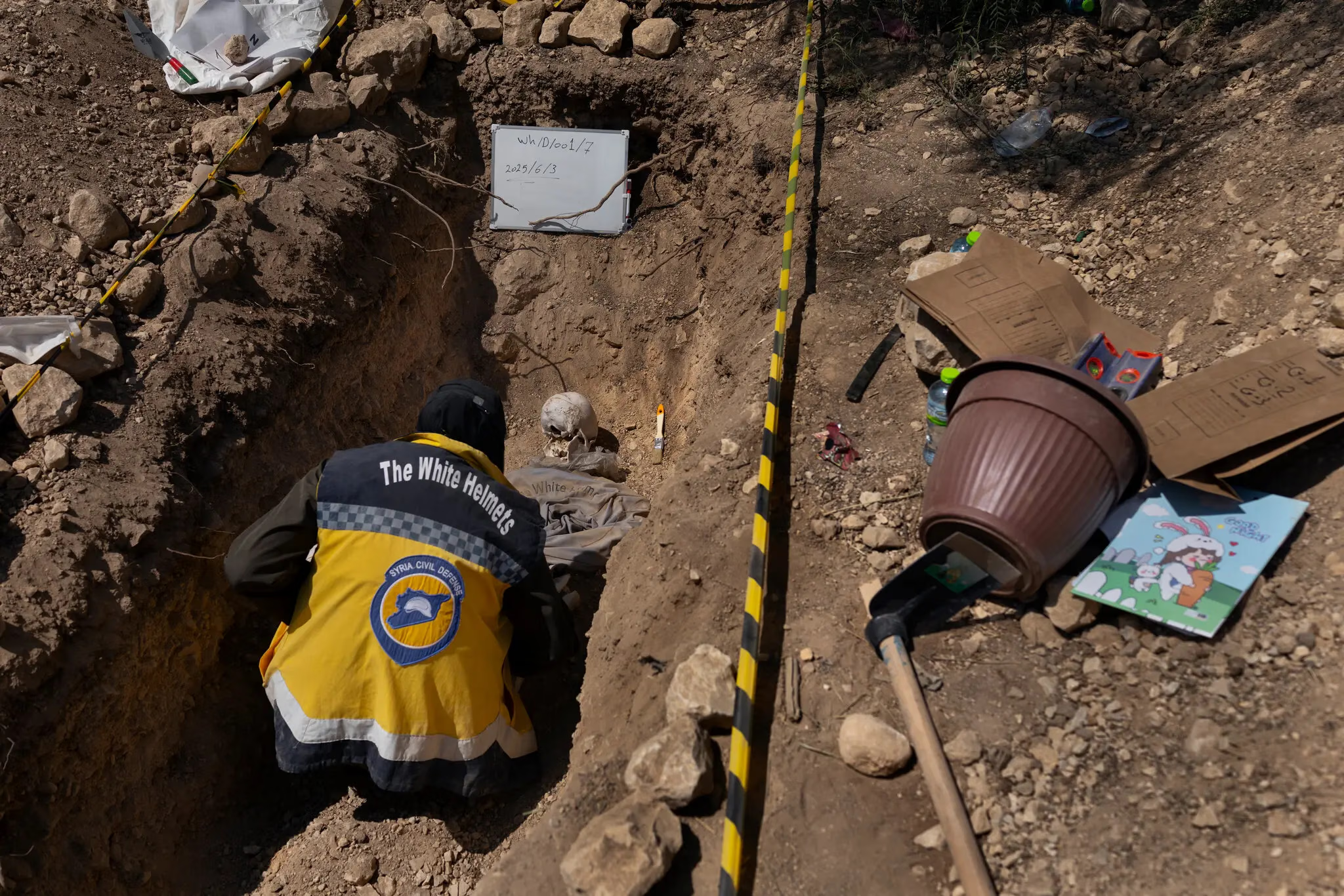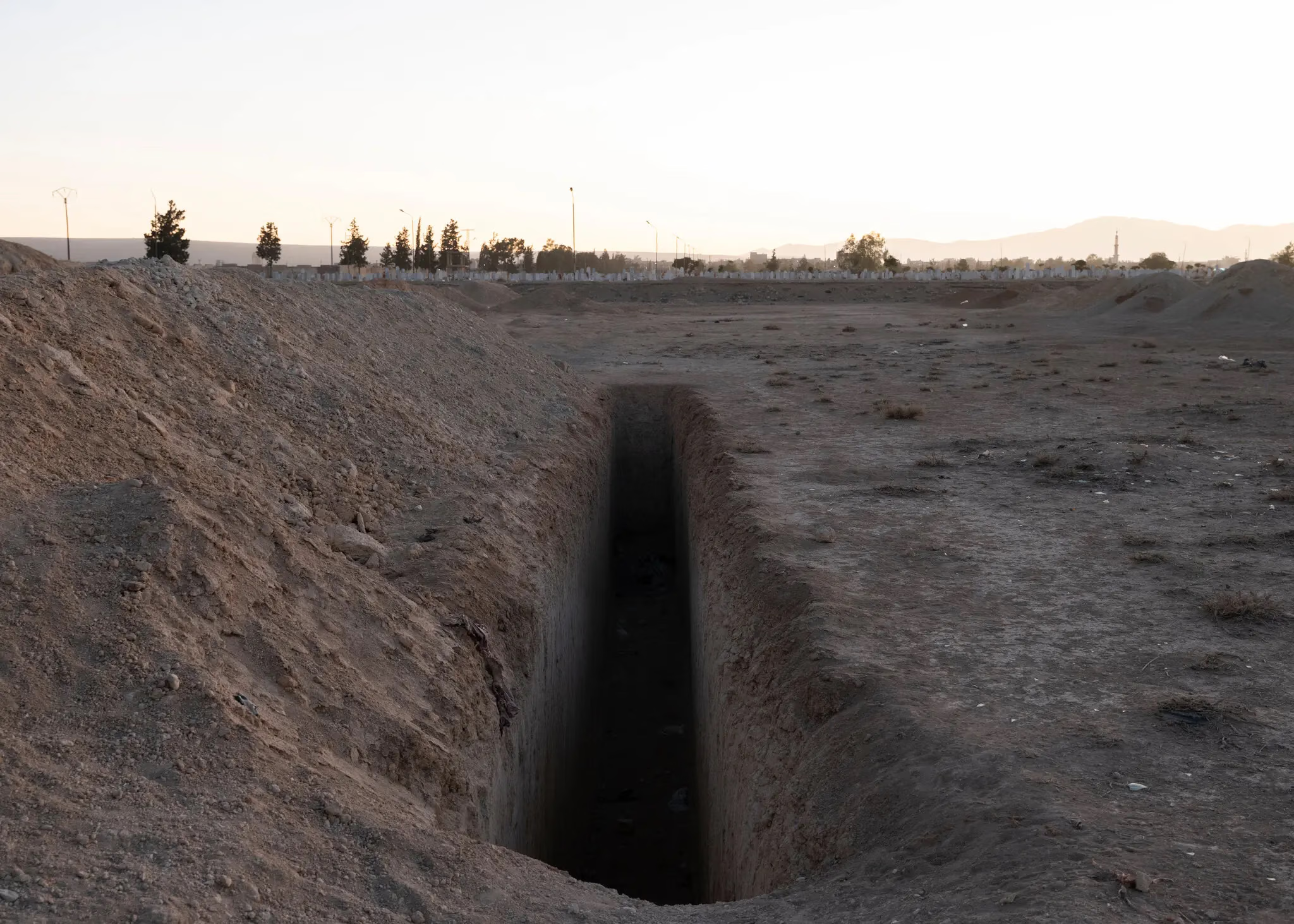Families of the missing no longer come to the Nadja necropolis by the dozens, as they once did, hoping to find the remains of their loved ones and some measure of solace.
In the first days after Bashar al-Assad was deposed in December, people streamed there, often with shovels, intending to break open the mass grave where nameless bodies lay beneath mounds of overturned earth. But it soon became clear that the body bags held only bones, impossible to link to any individual, and the search came to a halt.
Over nearly 14 years of civil war, tens of thousands of Syrians deemed opponents of Assad’s regime were detained by the former authorities and vanished; many, according to human-rights groups, were executed or died under torture. Hundreds, and possibly thousands, of such people are believed to have been hastily buried in Nadja on the outskirts of Damascus.
For families who spent years in agonizing uncertainty, the fate of the missing remains an unhealed wound.
Officials say Syria has already uncovered at least 60 mass graves, with new sites being found regularly. But identifying the victims is only one part of a broader and more complex task for the country’s new leadership, which is trying to establish even minimal accountability and justice for war crimes committed under Assad.
Khaled al-Mishtawli, 36, was among those who came to Nadja shortly after Assad’s fall. He counts the missing relatives on his fingers: three brothers, his father, three cousins and two aunts.
Al-Mishtawli says he is certain his relatives ended up in that burial site because they disappeared near their homes.
He only laments that those who killed people and dumped their bodies into trenches “could at least have left their identity cards beside them.” Then, he says, “families would at least know where they are.”

Khaled al-Mishtawli and his mother, Suria, hold a photograph of his father, Qasim. Several members of their family went missing during the Syrian civil war.
At times he still returns to the cemetery. During the Eid holidays, when Muslims visit the graves of their relatives, he also came.
He and many others in similar situations are pressing the authorities and international organizations to begin what officials warn will be a long and painstaking process of exhumation and identification.
Yet the new government lacks the expertise and forensic capacity for such work, and it will need assistance from international bodies.
Syria’s minister for emergency response and disaster management, Raed al-Saleh, citing data from human-rights groups, said that roughly 140 000 Syrians are still listed as missing.
The scale of the Assad regime’s possible crimes became clearer a year ago, when prisons were seized by rebel forces advancing rapidly across the country. Cell doors were thrown open, and more than 24 000 detainees were freed, according to the Syrian Network for Human Rights.

Unmarked graves at the Nadja cemetery.
But families of the missing had hoped to find far more.
In some prisons, relatives and rescuers spent weeks breaking through concrete floors, believing that beneath them lay basements where additional detainees might be held.
They found nothing.
It became evident that the missing were likely lying in mass graves.
Al-Mishtawli says his relatives began disappearing in 2013 in Sayyida Zainab, a suburb of Damascus—vanishing on their way home from work or while running errands. He believes they were all taken by pro-government Shiite militias stationed in the area; his family members were Sunnis.
In 2018, his father disappeared. By then, nine members of the family had already gone missing.
“We appeal to everyone—to international organizations, to the U.N., to anyone capable of exhuming the bodies and identifying the victims,” Al-Mishtawli said.
“The process is very long: it has only just begun, but unfortunately it will stretch over many years,” said Zeina Shahla, a spokeswoman for the Syrian commission on missing persons established by the new government.

Eman Zaarour excavates a training grave as part of an exercise.
She said the commission is looking to international organizations for support in developing technical and forensic capabilities, including the creation of DNA laboratories.
On a summer morning at a Damascus fire station, a group of recruits began their first day of field training under the guidance of two instructors from the Forensic Anthropology Foundation of Guatemala. The organization draws on expertise gained during Guatemala’s 36-year civil war to train teams around the world.
The Guatemalan specialists had buried eight plastic skeletons in an empty patch of land. The Syrian trainees surveyed the ground, noting uneven soil or changes in color—possible signs of graves.
Marwa Tata, a 30-year-old pharmacist from Damascus, tapped her foot lightly on a patch of ground at the edge of the site.
“There could be a mass grave here,” she said, shielding her face from the sun with sunglasses, a hat and a mask fixed over her headscarf with black-and-yellow crime-scene tape.
She jotted notes in a notebook whose cover read, “Leave the past where it belongs.”
“What do you think—how deep do you think they buried them here?” asked Eman Zaarour, a 26-year-old from Aleppo.
Zaarour said she studied chemistry at university and worked with humanitarian organizations around Aleppo during the war. When she heard about the training course, she enrolled immediately.
For her, as for many others, the work carries a deeply personal meaning.
Two of her relatives are still missing. One of them, she said, was shot on the front line in Aleppo, after which regime soldiers took the body away.
“I wanted to be part of this so I could first help my family, then my friends, and eventually all of Syria,” Zaarour said.
During training, the recruits learned to look for signs of what might have happened to the victims—skills they will need when examining and collecting evidence at real burial sites.
They dug for several hours before they began uncovering the buried plastic skulls. The instructors stressed that the work must be methodical, so as not to damage potential evidence that could be needed in future legal proceedings.
In the large pit Zaarour was helping to excavate, they carefully cleared the soil with a hand trowel and brush, revealing new sections of the mock skull bit by bit.
“It looks like they tied him up, right?” she said, brushing the dirt away slowly to expose a strand of metal wire wrapped around fabric.
Ahmad al-Khanduma, a 35-year-old lawyer from Aleppo, noticed a bag on the plastic model.
“I think they gagged him as well,” he said.
Carla Quintana, head of the U.N. Independent Institution on Missing Persons in Syria, noted that in the past the U.N. and other international bodies conducted mass-grave exhumations themselves rather than training local teams. But that created a problem: the work often outlasted the international presence.
“The international community needs to help Syrian authorities first build the infrastructure and train the people who will eventually be able to do this on their own,” Quintana said. “Searching for the missing is neither simple nor quick. It is a process, and it takes time.”
